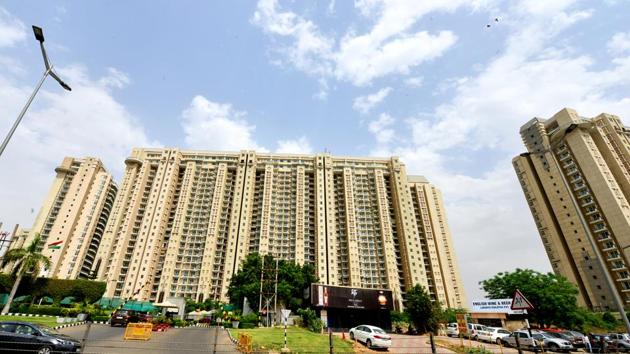‘Need to ensure Gurugram’s mobility plan does not become a mere report’
Gurugram needs a common mobility plan because it is a fast growing city and updated data would strengthen its strategy to address mobility issues in the city.
A comprehensive mobility plan (CMP) is needed for a city to satisfy its residents’ transportation needs, to provide a better quality of life. CMPs are usually built on existing planning practices and take due consideration of integration, participation, and evaluation principles. Therefore, an effort by the Gurugram Metropolitan Development Authority (GMDA) to commission a study which would ultimately translate into a comprehensive mobility plan for the city is a welcome exercise, and is required because Gurugram is a fast-growing city and updated data would further strengthen its strategy to address mobility issues in the city.

CMPs came into existence in the country more than a decade back, as a significant reform from the central government, as part of the Jawaharlal Nehru Urban Renewable Mission (JNNURM) mission that encouraged cities to think about mobility in a more holistic manner. Several cities prepared CMPs by following the general principle of “moving people, not cars” that was part of the National Urban Transport Policy (NUTP) so as to access central funds.
Even though Gurugram was not part of the JNNURM scheme, the city prepared an integrated mobility plan (IMP) for the Gurgaon-Manesar urban complex, almost a decade back. The IMP is a 200+ page document with great insights and ideas, but no ground impact. Therefore, as the city embarks on a new mobility planning journey, with a new set of consultants, it should definitely not repeat decade-old mistakes again. There were numerous issues with the IMP, but let me summarise by raising three fundamental questions that need to be asked before we begin the new CMP journey.
Who will own the plan?
The first and probably the biggest problem with the last plan was that no one owned the IMP for Gurugram. The plan was prepared by the Department of Town and Country Planning (DTCP), Government of Haryana but there was non-existent ownership even from public agencies like the Municipal Corporation Gurugram (MCG), Haryana Urban Development Authority (Huda), Haryana State Industrial and Infrastructure Development Corporation (HSIIDC). The question of ownership by entities such as private developers did not even arise.
The new CMP could be prepared at the instance of the GMDA, because of the legal requirement stipulated under the GMDA Act. It is imperative that all other agencies own the plan in a formal and documented manner, that is, in letter and spirit. It should then become a GMDA document, but one the that belongs to the city overall.
How will the plan be implemented?
The second biggest problem with the earlier plan was the lack of implementation on ground. While ownership was a definite issue, the lack of implementation strategy was another one.
So, as the GMDA is initiating the CMP this time, it should have the right resources for implementation. A lot will depend on the financial position of the GMDA. Plus, the CMP will be for the entire Gurugram-Manesar region, and there will be many parts of the plan which will fall beyond the GMDA’s jurisdiction and under other agencies. Therefore, it is even more important to understand how these agencies will implement their part of the plan, assuming that they have full ownership of it.
What about monitoring and evaluation?
Last, but definitely not the least, the issue with the last IMP was that there was no mechanism for monitoring and evaluation in place, the result of which was its slow death. One example is the Golf Course Road — it was built despite never being part of the plan. But the bus transport project, one of the many things proposed in the plan, is still being discussed and shows no progress on ground so far. Therefore, it is important to set up a monitoring and evaluation framework, even before the new plan is finalised. The provision of making online data accessible to the public — about the plan, the proposal, its implementation, timelines, its progress, agencies and stakeholders involved — would be great way to increase the effectiveness of the plan.
There are a lot of things to learn from the last IMP, which the new mobility plan should take into account . It is what happens outside the plan that matters more than what is in the plan. It is important that these points be addressed even before the plan is finalised; otherwise, it will be another report lying on the shelves gathering dust while the city would be doing just the opposite of what is needed.
(Amit Bhatt is Director — Integrated transport, WRI India)






